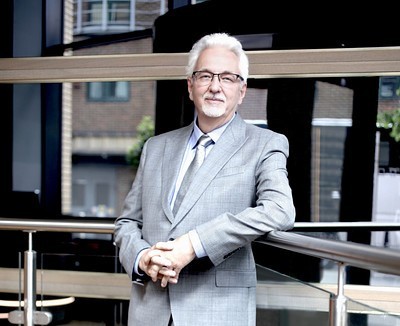There are several celebrated moments throughout the year when we see spikes in cyber-criminal activity – including Black Friday. This year it falls on 28th November 2025. Despite this, insurer Allianz suggests that, while a seasonable uptick is expected to occur this month, the total number of cyber-insurance claims is expected to “remain stable”, at around 700. This is similar to the number of claims it received year-on-year.
As far as the first half of the year is concerned, it says the “the overall frequency of notifications was in line with activity a year earlier with around 300 claims.” It adds that despite the increasing sophistication and the volume of attacks that companies face, claim severity has dropped by 50%. Claims that involve large losses have also fallen by around 30%, “driven by larger companies’ cumulative investments in cyber security, detection and response.”
No time to relax
This sounds like good news, but does it mean that companies and other types of organisations can relax and avoid investing in cybersecurity? No, not at all. Allianz’s September 2025 press release, ‘Cyber insureds gain momentum against attackers, but supply chain challenges remain,’ argues that there is no room for complacency because ransomware attacks remain the top driver of cyber-incidents. However, the focus of cyber-attacks is shifting to smaller, mid-sized companies as they are less resilient against cyber-attacks and data breaches.
“Several ransomware events have hit the headlines this year, but overall, we see that insured losses from these attacks have decreased in 2025 to date. Insureds’ increased detection and response capabilities are helping to stop some attacks at an early stage,” explains Michael Daum, Global Head of Cyber Claims at Allianz Commercial.
“Every step an attacker progresses, and every minute that they are in the system, the impact goes up exponentially. The cost of a ransomware attack that progresses to data theft and encryption can be 1,000 times higher than an incident that is detected and contained early,”
Increasing loss impact
In Germany, says Allianz, the loss impact of cyber-insureds increased by 70% over 4 years, compared with a 250% increase in the economic impact of cyber-crime. This is creating a cybersecurity resilience gap of 3:1, which the firm shows that cyber-insurance policyholders have a heightened awareness of the risk and impact of cyber-attacks. Subsequently, they are taking action to mitigate it by focusing on prevention and minimising business disruption.
Investing in prevention should be the focus of companies and organisations large and small. This Black Friday, expect to see the increased use of AI-powered scams to create more convincing phishing emails and fake websites, and the rise of social engineering to exploit the frenzy that often occurs over the Black Friday e-commerce and m-commerce shopping weekend – wherever it is celebrated, such as in the United States and in the UK.
For example, Cyber Daily reveals that “IKEA lost millions after a 2024 Black Friday cyber-attack. The European operator of the IKEA furniture store “suffered last year has cost it tens of millions of dollars.” The attack impacted its stores in Greece, Cyprus, Bulgaria and Romania. The article by Daniel Croft, ‘IKEA lost millions after 2024 'Black Friday' cyber-attack,’ claims that Fourlis Group’s systems were eventually restored in March 2025, costing €15 million in lost sales – that’s approximately US$115,2603.74.
Not just consumers: B2B impact
Cyber-criminals will concentrate on online traffic and consumer eagerness for deals. They may use tactics such as voice and video phishing, as well as multichannel attacks that deploy different methods to either cause disruption, or to cause a data breach. But companies shouldn’t think that consumers are the only ones that are vulnerable. Over the Black Friday weekend period, B2B cyber-crime also increases due to the interconnectedness of businesses.
Will Sweeney, CEO of data privacy and security consulting firm Zaviant wrote in his December 2024 article, ‘Is that a data breach in your stocking? How to prevent holiday cyberattacks,’ that B2B operations and supply chains are often vulnerable at this time of the year.
“Cybercriminals…try to exploit email accounts to make fraudulent transactions or generate internal information leaks, otherwise known as business email compromise (BEC)”, he says, before adding: “Additionally, denial-of-service attacks are becoming more common, where bad actors disrupt business operations, usually those reliant on online services.”
1.8 million DDoS attacks
Steven Burnett writes in his article for Coinlaw on 16th June 2025: “Cybercriminal activity spikes by 70% during Black Friday compared to regular shopping days. There are over 1.8 million [Distributed Denial of Service] (DDoS) attacks recorded on e-commerce websites, with 70% of these targeting checkout systems.”
Preventing cyber-attacks is a never-ending challenge. The ways in which cyber-criminals attack organisations are constantly evolving, and so there is no time to be complacent. Plus, while cyber-insurance may offer a payout for some unfortunate organisations, the focus should be on ensuring that they are better protected in the first place. In response to this, Richard Horne, CEO of the UK’s National Cyber Security Centre, remarks:
“We face enduring threats from hostile states and cyber criminals looking to exploit our dependency on the technology that now underpins all aspects of modern life. From ransomware attacks to AI-enabled intrusion, malicious actors are looking to maximise their disruptive and destructive efforts in an increasingly connected world.”
Back up, back up, back up!
Regardless of how an attack is conducted, to protect data, it’s vital to back it up in at least 3 places to reduce the likelihood of any disruption, as a consequence of a successful cyber-attack. Moreover, for the most sensitive and critical data, it’s essential to create airgaps to make it harder for hackers to get access to the data. As for backing up, traditionally this used to be done with WAN Optimisation. However, it can’t handle encrypted data in flight. The data has to be unlocked before it can be sent, and then once it’s received, it must be locked again.
SD-WANs are increasingly playing a role – they are a great technology, but they often benefit from a boost with WAN Acceleration – not to be confused with WAN Optimisation. With it, the likes of the National Institutes of Health, CVS Healthcare and a Formula 1 team, can achieve up to 200 times faster data transfer speeds than unaccelerated performance or traditional WAN Optimisation technologies. It improves bandwidth utilisation, too, by up to 98%.
WAN Acceleration is particularly crucial for companies and organisations that have to handle growing volumes of data – including data that may be stored in the cloud. This technology uses artificial intelligence, machine learning and data parallelisation to mitigate the effects of latency and packet loss on wide area networks (WANs) – significantly improving their speed, including with encrypted data in flight, which remains secure and confidential at all times.
This makes WAN Acceleration a strategic asset for business continuity, rather than just as a tool for disaster recovery, and it can help to obfuscate cyber-criminals when the data is being transmitted. It is therefore the best insurance policy you can have – cutting down the time and effort it takes to back up and to restore data whenever it is needed to remain operational.
Actual insurance claims might remain stable this year, and that would be a sign of better resilience against cyber-attack, but what needs to be really stable is the implementation of policies, procedures, training and technologies that can prevent data leaks. Or, when they do happen, it’s critical to have a means of getting back to business as quickly as possible. That is why companies and organisations would do well to invest in WAN Acceleration this Black Friday.






